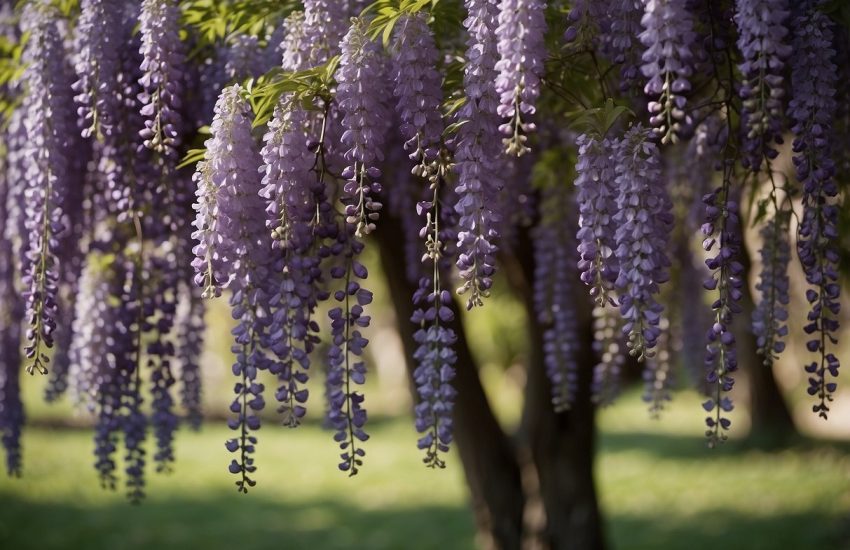Oak Trees in South Carolina: A Guide to the State’s Native Species
Oak trees are an essential part of South Carolina’s landscape, culture, and wildlife. With over 20 species of oak trees present in the state, they are a common sight in both urban and rural areas. These majestic trees are known for their sturdy trunks, lush foliage, and acorns that provide food for a variety of animals.

South Carolina’s oak trees are not only beautiful but also serve an important ecological role. They provide habitat for numerous species of wildlife, including birds, squirrels, and insects. The trees also help mitigate the effects of climate change by absorbing carbon dioxide from the atmosphere and releasing oxygen. In addition, oak trees are an important part of the state’s cultural heritage, with many communities celebrating their beauty and significance through festivals and events.
Whether you are a nature lover, a history buff, or simply appreciate the beauty of trees, South Carolina’s oak trees are a sight to behold. From the towering live oak trees draped in Spanish moss to the smaller, but no less impressive, water oak and red oak trees, there is no shortage of natural wonder to explore in the Palmetto State.
Types of Oak Trees in South Carolina

South Carolina is home to a diverse array of oak tree species, each with its own unique characteristics and benefits. Here are some of the most notable types of oak trees found in South Carolina.
Live Oak: The Iconic Southern Tree
The live oak is perhaps the most iconic tree of the American South. With its broad, spreading canopy and twisting branches, the live oak is a symbol of strength and resilience. This species is known for its evergreen leaves, which are often used in landscaping and horticulture. Live oaks can grow up to 80 feet tall and 100 feet wide, providing ample shade and habitat for wildlife.
White Oak: The Versatile Hardwood
The white oak is a versatile hardwood tree that is prized for its strength, durability, and attractive grain patterns. This species is commonly used in furniture, flooring, and construction. White oaks can grow up to 100 feet tall and 4 feet in diameter, making them one of the largest oak species in South Carolina. They are also known for their distinctive lobed leaves and acorns, which are an important food source for many animals.
Red Oak: The Fast-Growing Giant
The red oak is a fast-growing tree that can reach heights of up to 100 feet. This species is known for its strong, straight trunk and large, spreading branches. Red oaks are commonly used in construction and woodworking due to their strength and durability. They are also an important food source for many animals, including deer, squirrels, and birds.
Other Notable Oaks: Diversity of Species
In addition to the live oak, white oak, and red oak, South Carolina is home to a variety of other oak tree species. Some of the most notable include:
- Southern Red Oak: A fast-growing tree with distinctive red leaves in the fall.
- Willow Oak: A medium-sized tree with slender leaves and a graceful form.
- Blackjack Oak: A small tree with deeply lobed leaves and a rugged, twisted appearance.
- Chestnut Oak: A large tree with thick, deeply furrowed bark and glossy leaves.
- Turkey Oak: A medium-sized tree with small, spiky leaves and a rough, scaly bark.
- Laurel Oak: A tall, slender tree with glossy leaves and a distinctive pyramidal shape.
- Water Oak: A medium-sized tree that grows in wet areas and has small, rounded leaves.
Each of these oak tree species has its own unique characteristics and benefits, making them important components of South Carolina’s natural landscape.
Ecology and Care of Oak Trees
Soil and Water Requirements
Oak trees require well-drained soils that are rich in nutrients to thrive. They grow best in soils that are slightly acidic with a pH between 5.0 and 6.5. It is recommended to plant oak trees in areas with good drainage and avoid planting them in areas with heavy clay soils or poorly drained soils. Oak trees also require adequate water to grow and mature. During the first year after planting, oak trees should be watered regularly to help establish their root systems. After that, they can tolerate drought conditions, but they should be watered during extended dry periods.
Sunlight and Spacing for Healthy Growth
Oak trees require full sun to grow and thrive. They should be planted in areas that receive at least six hours of direct sunlight per day. Proper spacing is also important for healthy growth of oak trees. They should be planted at least 20 feet apart to allow for proper canopy development.
Pests and Diseases Affecting Oaks
Oak trees are susceptible to various pests and diseases, including oak wilt, which is a fungal disease that can kill oak trees. Other pests that can affect oak trees include gypsy moth, oak leaf roller, and scale insects. Proper care and maintenance, including regular pruning and professional tree care, can help prevent and control these pests and diseases.
Conservation and Landscaping Uses
Oak trees are an important part of the ecosystem in North America, providing food and shelter for various wildlife species, including deer and squirrels. They are also popular shade trees and are commonly used in landscaping. Oak trees can be used in low-maintenance landscapes, and they are well-suited for use in the Lowcountry and Piedmont regions of South Carolina.
Overall, oak trees are a valuable resource that should be conserved and protected. Proper care and maintenance, including regular pruning and professional tree care, can help ensure the health and longevity of these important trees.


